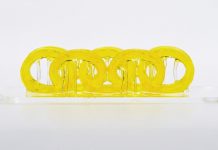
In a significant advancement for car safety, researchers from Cambridge, Oxford, and University College London (UCL) have developed a new kind of heads-up display for drivers.
Unlike current systems that show simple 2D images on the windshield, this new technology uses 3D holograms to alert drivers about road hazards in real time.
The innovative system created by these researchers takes the idea of a heads-up display to the next level.
It uses 3D laser scanners and LiDAR (a technology that measures distance with laser light) to create detailed holograms of the streets.
This system is so advanced that it can project images of things that the driver can’t see directly, like a road sign hidden behind a large truck.
These holograms show up in the driver’s view, matching the real object’s size and distance.
Every day, thousands of traffic accidents happen due to human error. A major cause is that drivers often get distracted or don’t see hazards in time.
Current heads-up displays can show information like speed or directions, but they’re limited to flat images on a small part of the windshield.
This new system, however, offers more accurate information and keeps the driver’s attention on the road.
The researchers used a special 3D holographic setup combined with LiDAR data. They tested this on Malet Street at the UCL campus, creating layered 3D holograms with up to 400,000 data points.
The key to their innovation is the ability to project these holograms in real time, adapting to the ever-changing street environment.
An exciting aspect of this technology is that the data it collects can be shared and stored in the cloud.
This means that other drivers can also access this information, much like the real-time traffic updates we get from navigation apps today.
The system is designed to be user-friendly. The researchers know that too much data can be overwhelming.
They aim to provide just enough information for drivers to be aware of their surroundings without getting distracted.
Earlier this year, a virtual demonstration was held at the Science Museum in London. User feedback helped make the system more inclusive and easier on the eyes.
The team is committed to creating a system that is useful and comfortable for everyone, including those with visual impairments.
The next big step is to test this technology in real cars. The researchers are partnering with Google and plan to conduct road tests in 2024, either on public or private roads.
In summary, this new 3D hologram system represents a huge leap forward in car safety technology.
By providing drivers with real-time, accurate 3D information about road conditions and hazards, it promises to make driving much safer for everyone.
Source: University of Cambridge.



